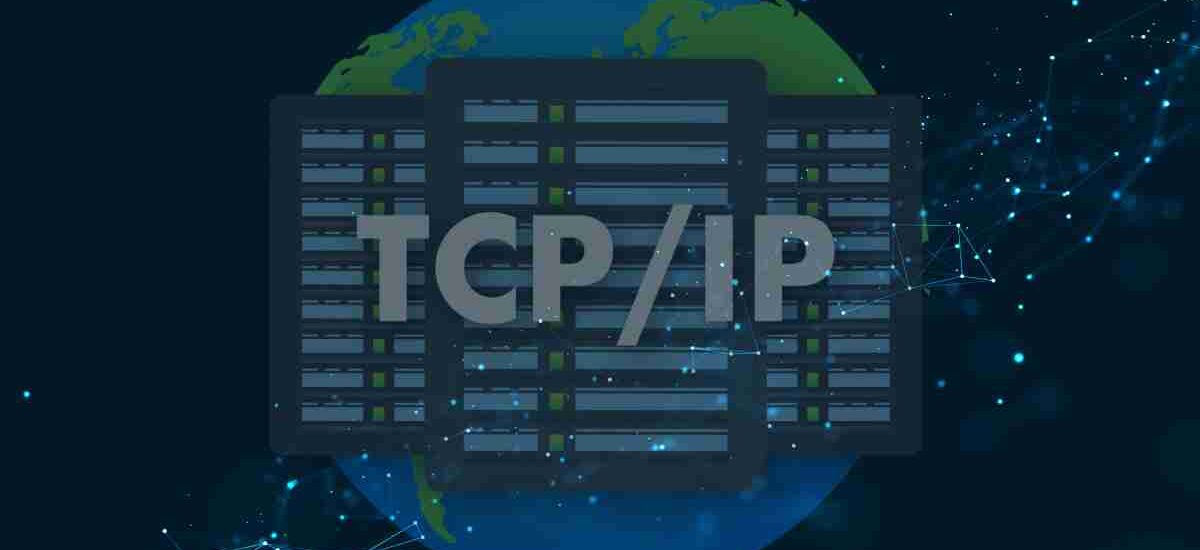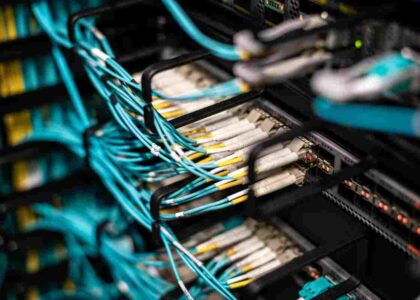In today’s interconnected world, where we casually stream videos, send emails, and perform video calls without a second thought, there lies a powerful and structured system that ensures this seamless communication. That system is the TCP/IP model. If you’re a student, IT professional, or just someone curious about how the internet works, this blog will guide you step-by-step through the TCP/IP model—its structure, working, pros, cons, and why it continues to be the backbone of modern networking.
What is the TCP/IP Model?
The TCP/IP model, short for Transmission Control Protocol/Internet Protocol, is a set of rules that governs how data is transmitted over networks. It was developed by the U.S. Department of Defense in the 1970s to ensure reliable communication between different computer systems.
This model is a protocol suite, meaning it includes a range of protocols working together to support communication between computers over a network like the internet. The TCP/IP model is the framework upon which the entire internet is built.
Role of TCP/IP
TCP/IP plays several critical roles in networking:
- Standardization: Provides a universal set of rules so that different systems can communicate.
- Interoperability: Enables devices from different vendors and platforms to connect and exchange information.
- End-to-End Communication: Ensures reliable delivery of data between the source and destination.
- Routing and Addressing: Helps in identifying devices through IP addresses and routing the data accordingly.
Without TCP/IP, it would be virtually impossible for computers, phones, servers, and routers to communicate efficiently.
Layers of the TCP/IP Model
The TCP/IP model is composed of four layers, each with specific roles and responsibilities. These layers work together to ensure smooth communication from one device to another.
1. Application Layer
This is the topmost layer, and it’s where the user interacts with the network. Protocols in this layer include:
- HTTP/HTTPS (for web browsing)
- FTP (for file transfers)
- SMTP/POP3/IMAP (for email)
It handles:
- User interface
- Data formatting
- Application-level protocols
2. Transport Layer
This layer ensures end-to-end communication and data integrity. It uses two main protocols:
- TCP (Transmission Control Protocol): Reliable, connection-oriented.
- UDP (User Datagram Protocol): Fast, connectionless.
It manages:
- Segmentation of data
- Flow control
- Error correction
3. Internet Layer
The Internet Layer is responsible for routing the data from the source to the destination across multiple networks. The key protocol here is:
- IP (Internet Protocol)
Other supporting protocols:
- ICMP (Internet Control Message Protocol)
- ARP (Address Resolution Protocol)
It handles:
- Logical addressing (IP addresses)
- Routing
- Packet forwarding
4. Network Access Layer
Also known as the Link Layer, it deals with the physical transmission of data. It includes:
- Ethernet
- Wi-Fi
- PPP (Point-to-Point Protocol)
Responsibilities:
- MAC addressing
- Framing
- Error detection (not correction)
- Physical transmission (via cables, fiber, etc.)
Working of the TCP/IP Model
Now that we understand the layers, let’s dive into how they work in real-world scenarios.
When Sending Data (From Sender to Receiver)
- Application Layer: The process starts here. Suppose you’re sending an email. The application (email client) formats the data and uses SMTP to prepare it for transmission.
- Transport Layer (TCP/UDP): This layer breaks the email into segments. TCP adds headers, manages sequencing, and ensures error-free transmission.
- Internet Layer (IP): Each segment is encapsulated into a packet and assigned source and destination IP addresses. Routing decisions are made here.
- Network Access Layer (Link Layer): The packets are converted into frames with MAC addresses and sent through the physical medium (Ethernet cable, Wi-Fi, etc.)
When Receiving Data (At the Destination)
- Link Layer: The receiving device reads the physical signals and converts them into data frames.
- Internet Layer: IP addresses are checked to ensure the packet is meant for this device. The packet is then stripped of its IP header and forwarded.
- Transport Layer: TCP reassembles the segments, checks for errors, and ensures all data is received in order.
- Application Layer: Finally, the application (email client) displays the message to the user.
Why TCP/IP is Used Over the OSI Model
While the OSI model is a well-known theoretical framework with seven layers, the TCP/IP model is practical and widely adopted. It evolved with the internet and became the de facto standard because:
- It was developed in conjunction with the internet, making real-world deployment seamless.
- It provides a simplified, layered structure that aligns better with how network protocols actually function.
- Its protocols were rigorously tested in operational environments, whereas OSI remained largely theoretical.
Advantages of the TCP/IP Model
1. Interoperability:
TCP/IP enables different devices, systems, and software to work together, irrespective of their manufacturer. This universal compatibility is essential in today’s heterogeneous network environments.
2. Scalability:
It supports both small local networks and large global networks like the internet. As demand increases, the model adapts without needing redesign.
3. Standardization:
Because it’s based on open standards, any vendor can develop compatible hardware or software, encouraging innovation and competition.
4. Flexibility:
TCP/IP is not rigid. It supports multiple routing protocols, network interfaces, and transport protocols, making it versatile for various use cases.
5. Reliability:
TCP/IP ensures that data is transmitted reliably, especially via TCP. Lost packets are retransmitted, and data integrity is verified.
Disadvantages of the TCP/IP Model
1. Security Concerns:
The model was not designed with security in mind. Protocols like IP, TCP, and UDP lack built-in encryption or authentication, making data susceptible to threats unless additional measures (like TLS or VPNs) are implemented.
2. Inefficiency for Small Networks:
TCP/IP can be overkill for simple, small-scale networks. Its complexity and overhead may be unnecessary in such environments.
3. Limited by Address Space:
The original IPv4 protocol supports around 4.3 billion unique addresses, which is not enough for today’s needs. While IPv6 addresses this, adoption is still ongoing.
4. Data Overhead:
The encapsulation process adds a significant amount of overhead to each data packet (e.g., headers), which can affect bandwidth, especially in high-throughput applications.
Conclusion
The TCP/IP model is the invisible engine that drives all digital communication across the globe. From sending a simple WhatsApp message to accessing cloud services, TCP/IP ensures that data travels efficiently and reliably from one point to another.
Despite its limitations, TCP/IP remains the cornerstone of the internet, with its layered structure, standardized protocols, and ability to scale being the primary reasons for its continued dominance.
Understanding this model is crucial for anyone looking to pursue a career in networking, cybersecurity, or any field related to IT. So, the next time you send an email or stream a video, remember that TCP/IP is silently making it all possible.






